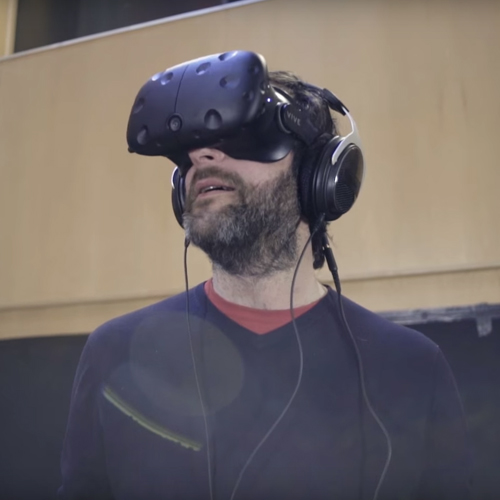Abbey Road’s Head of Audio Products, Mirek Stiles, tells us more about his experiments in Spatial Audio in part two of his blog.
In the previous instalment of this blog I introduced Spatial Audio and the incredible technology that makes it possible. I talked about the challenges presented by Spatial Audio and how it might best progress and where we’ll see it grow next.
But the question remains, what does Spatial Audio mean for Abbey Road Studios? Well the truth is I currently don’t know for sure, but I am dipping my toe in the water.
By dipping my toe, I mean throwing myself headfirst and making as big a splash as possible. You see, from the recording engineer’s point of view all this has thrown up a long list of recording and production questions.
Various specialised microphones and software have been slowly creeping onto the market over the last couple of years. Abbey Road needs to ensure it’s ready, when (or if) this technology kicks off. Bearing in mind that both Google and Facebook have various online spatial audio content, the BBC have broadcast programmes in binaural sound and the general buzz around Virtual Reality and Augmented Reality, my gut feeling is the need for spatial audio recording and mixing solutions is not going away anytime soon.
With this in mind, I have been experimenting with various microphones and software over the last 12 months. This has involved everything from borrowing our very talented receptionist Emily to play and sing into a new exotic microphone I managed to get my hands on, to assisting film composer Stephen Barton exploring production solutions with some of best orchestral musicians in the world in Studio One.
There has also been a fantastic joint research project with York University in recording music for VR with a band in Studio Three. It’s been a lot of fun experimenting with such a talented bunch and I have learnt a hell of a lot, but as with any research project, one question answered opens up many more that need solving.

It’s also become apparent that we can learn a lot from the gaming world, which in some cases has been using Spatial Audio for some time now. Especially with regards to VR, some workflows will most likely be inherited from the gaming world – the fractions of traditional audio, video and gaming workflows are slowly merging together.
I cannot state strongly enough how important Spatial Audio is for VR. The reason for this being that although VR is a 360-degree experience, your field of vision isn’t. Currently in VR you will get 90-degrees at best, and the human field of view limit is around 114 anyway.
So, as in real life you rely on sound to ensure you are looking in the correct direction and interacting with the creator’s intention. In my opinion, good spatial audio cues are crucial to a fully immersive VR experience.
Abbey Road and the audio world in general needs to be preparing for all this. Abbey Road Studios currently has an amazing versatile client base who return to the studios time and time again, from pop, rock, classical, grime, EDM, film and gaming – I really don’t see why we can’t open our loving arms to the crazy world of VR.
Anyway, I am going to crack on. Sometimes it feels like wading through treacle piecing all this together, but at least it’s very nice tasting treacle.
I hope that this has made some sort of sense and possibly even inspired to you start exploring the murky world of spatial audio yourself – if you do, have fun and please pass on any tips.
